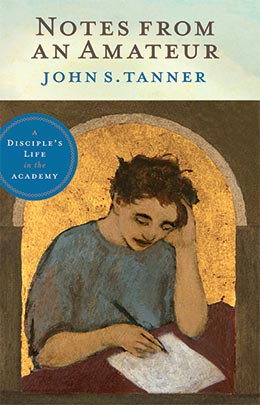Carpe Diem
John S. Tanner, Notes from an Ameteur: A Disciple’s Life in the Academy (Provo, UT: Religious Studies Center; Salt Lake City: Deseret Book, 2011), 16–8.
Just before graduation, my cherry tree robed itself in its annual spring finery. The blossoms caught me by surprise this year. I’d been so buried by work. To see my cherry tree suddenly in full bloom, all decked out in a glorious display of lacy white, momentarily took my breath away. The showy spectacle called to mind one of my favorite carpe diem poems, A. E. Housman’s “Loveliest of Trees.”
Loveliest of trees, the cherry now
Is hung with bloom along the bough,
And stands about the woodland ride
Wearing white for Eastertide.
Now, of my threescore years and ten,
Twenty will not come again,
And take from seventy springs a score,
It only leaves me fifty more.
And since to look at things in bloom
Fifty springs are little room,
About the woodlands I will go
To see the cherry hung with snow. [1]
I too wonder how many springs I have left, how many more times I’ll be privileged to behold the greening of the world when Nature dons its coat of many colors. No doubt far fewer than Housman’s fifty, unless the Millennium dawns before I die.
I also wonder how many more graduations I have left, how many more students I’ll teach, how many more Shakespeare or Milton classes. The thought stirs twinges of melancholy—and resolve to seize the day: carpe diem.
Carpe diem comes from a poem by the Roman poet Horace. [2] Sometimes it is associated with the hedonistic philosophy of eat, drink, and be merry, for tomorrow we die. Or as a ’60s rock song so eloquently put it, “Sha la la la la la, live for today.” [3]
But carpe diem has graver and more uplifting connotations. It reminds us to rejoice in the blessings of each day, to take time to express love and appreciate beauty, to focus on what is important and not be distracted by the trivial, to be fully present in the present. This belongs to the perennial wisdom of sages and saints, poets and prophets.
Including President Thomas S. Monson. In one of his first major talks as prophet of the Church, he counseled us to “find joy in the journey.” [4] He quoted a favorite line from Professor Hill in The Music Man, who says, “You pile up enough tomorrows, and you’ll find you’ve collected a lot of empty yesterdays.” [5]
He also referred to the poignant conclusion of Our Town when, having died in childbirth, Emily is allowed to relive one day of her life. She chooses her twelfth birthday. She is overcome with the beauty and wonder of everyday life and with the fact that no one seems to notice how amazing it is. People seem to be sleepwalking through life, not really seeing each other, or being fully present in the present.
She exclaims, “Oh, Mama, just look at me one minute as though you really saw me. . . . Just for a moment now we’re all together. . . . Let’s look at one another.” Then she breaks down: “I can’t go on. It goes so fast. We don’t have time to look at one another. I didn’t realize. So all that was going on and we never noticed. . . . Oh, earth, you’re too wonderful for anybody to realize you. . . . Do any human beings ever realize life while they live it?—every, every minute?” To which the narrator responds, “The saints and poets, maybe—they do some.” [6]
Our days on earth and at BYU are relatively brief. None of us knows how many springs we have left, nor how many classes and commencements. This spring let us try to live more fully in the moment, find time to make memories with family, visit a friend, seek out a struggling student; go to lunch with a colleague, and rejoice in the beauties of nature and blessings of each day. This is our hour. These are our days. Let us open our eyes “to see the cherry hung with snow.”
Notes
[1] A. E. Housman, “Loveliest of Trees,” in The Norton Anthology of English Literature, 7th ed. (New York: W. W. Norton & Company, 2000), 2:2042.
[2] Horace, “Ode I-XI,” in David West, Horace Odes I, Carpe Diem: Text, Translation, and Commentary (Oxford: Clarendon Press, 1995), 50–51.
[3] The Grass Roots, “Let’s Live for Today,” on Let’s Live for Today (Dunhill Records, 1967).
[4] Thomas S. Monson, “Finding Joy in the Journey,” Ensign,November 2008, 84–88.
[5] Meredith Wilson and Franklin Lacey, The Music Man (1957).
[6] Thornton Wilder, Our Town (1938).
